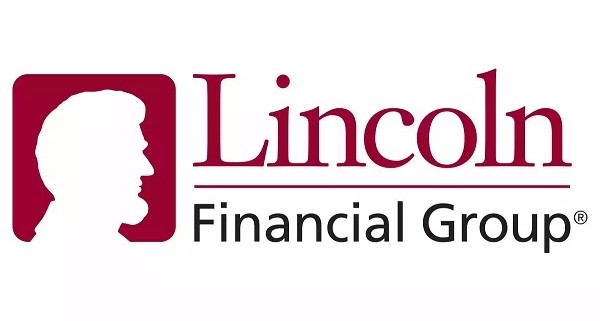Lincoln MoneyGuard 2 – Combination Life Long Term Care Insurance
Click Here for Your Long Term Care Insurance Quotes

Lincoln MoneyGuard® II (Lincoln MoneyGuard 2) is a universal life insurance policy with an optional qualified long-term care insurance rider available for an additional cost.
It is issued by The Lincoln National Life Insurance Company, Fort Wayne, Indiana.
Lincoln MoneyGuard II (Lincoln MoneyGuard 2) provides benefits to reimburse your qualified long-term care costs.
We’re going to discuss these 3 important topics:
• What is long-term care
• What are some planning options, and
• What is your long-term care plan
Americans are becoming more aware of the need to plan for long-term care costs. You might have seen this topic in the news more and more lately, or you may know of someone in a long-term care situation.
According to a recent article on long-term care published by the Associated Press, Americans, age 40 or over, count on their families to be there for them as they age, but those who are currently receiving long-term care or who have received it in the past are less likely to believe they could rely on their family in a time of need.1
If you would need care, the last thing you and your family want to deal with is making tough decisions about:
Who will take care of you?
How much will it cost?
What assets will you need to sell to cover long-term care costs if you did not have a plan.
But what is long-term care? Long-term care is the type of care you or someone in your family may need if you require assistance taking care of yourself, either due to a physical or cognitive impairment. Typically, it involves chronic health conditions that are expected to last longer than 3 months.
So what are the risks?
If you’re planning on living a long life — the typical financial plan usually takes you well into your 90s.
The bad news is: You are unlikely to be as healthy as you are now for the rest of that long life.
If you don’t have a plan for long-term care, you could potentially put your savings, your financial goals and your lifestyle at risk.
Or what if one of your loved ones needs care? Whether you provide care or help pay the costs of long-term care services, it could change your life.
So given the high likelihood of experiencing a long-term care situation in your life time, are you prepared for its financial impact?
While the national average cost of a private room in a skilled nursing facility is currently more than $95,000 a year,1 averages could be misleading, so you should find out the cost of the type of facility you would choose to receive care in should you need it. Also consider the costs of care in your state.
What if you may not need care until years in the future? Let’s suppose a modest cost trend of 3 percent over an assumed 15-year period until the typical claim may occur. Under this scenario based on averages, a 65-year-old could expect long-term care expenses to top $750,000 and exceed $1.3 million if we assume either a longer stay or a greater rate of inflation on costs.2
Even if you could afford that, wouldn’t it make more sense to leverage the money you have in a more tax-efficient way?
So given the high likelihood of experiencing a long-term care situation in your life time, are you prepared for its financial impact?
While the national average cost of a private room in a skilled nursing facility is currently more than $95,000 a year,1 averages could be misleading, so you should find out the cost of the type of facility you would choose to receive care in should you need it. Also consider the costs of care in your state.
What if you may not need care until years in the future? Let’s suppose a modest cost trend of 3 percent over an assumed 15-year period until the typical claim may occur. Under this scenario based on averages, a 65-year-old could expect long-term care expenses to top $750,000 and exceed $1.3 million if we assume either a longer stay or a greater rate of inflation on costs.2
Even if you could afford that, wouldn’t it make more sense to leverage the money you have in a more tax-efficient way?
How many of you have known someone who experienced a long-term care event?
Who provided their care?
How did they pay for it?
How long did they need care?
How did it affect their family?
The bottom line is: Long-term care isn’t about you. It’s about those you love and those who care about you.
So, what are your options if you do need long-term care?
• Medicaid — This federal and state healthcare program only benefits those who spend down their assets and have low income.
• Medicare — Generally, Medicare doesn’t pay for long-term care. Medicare pays only for acute care and usually for less than 100 days.
• Health insurance — Also only covers skilled acute care — not long-term care.
• Family — Who would take care of you? Are they situated to do so?
• Sell assets — Which assets would you sell to pay long-term care expenses —assets set aside for retirement or college or your children’s inheritance?
You could also look at insurance solutions — either traditional long-term care insurance or linked-benefit long-term care solutions.
With traditional long-term care insurance, you get the most long-term care benefit for the premiums you pay, but if you pass away without ever needing care, you get nothing — it’s a use it or lose it type of policy. And if you change your mind down the line and want to get out of the contract, you may only have limited return-of-premium options.
Keep in mind, the insurance company could increase your premiums at any point in the future.
With hybrid long-term care policies, you could potentially receive less benefits per premium dollar than with traditional long-term care insurance.
But if you pass away without needing care, your beneficiaries receive an income tax-free death benefit. You also have options for the return of your premium if you need to get your money out at some point. Finally, your premiums are set at issue and do not increase.
Lincoln MoneyGuard® II (Lincoln MoneyGuard 2) is a hybrid solution that provides guaranteed income tax-advantaged benefits to reimburse your qualified long-term care expenses. You get more for your long-term care dollars because these benefits are worth much more than your premium payments.
And your policy provides benefits — even if you never need long-term care as long as you play your planned premiums.
You don’t have to be concerned about premium increases, because your policy’s premiums are set at issue and are guaranteed never to increase.
And if you qualify for benefits, your policy has no elimination period. This could make a real difference in your total out-of-pocket costs for qualified long-term care expenses. It’s a good thing to know as you prepare for your future.
Lincoln MoneyGuard® II (Lincoln MoneyGuard 2) gives you:
1. Tax-advantaged long-term care benefits if you need care.
1. Tax-advantaged long-term care benefits if you need care.
OR
2. An income tax-free death benefit for your children or beneficiaries if you don’t need care.
OR
3. Return of premium options. You could choose to maximize your benefits, and get more from your policy with an increased death benefit and increased monthly benefits if you need long-term care. Or you could choose to maximize your return of premium. A full return of premium is available to you after year 5, provided all your planned premiums are paid. The return of premium is through the Value Protection Rider, available at issue. The Rider contains complete terms and conditions. If your policy is surrendered before the planned premiums are paid, the surrender value will be paid to you. If you surrender your policy for the return of premium, there may be tax implications, and you should consult a qualified tax advisor.
It’s good to know you have options. By choosing return of premium Option 1, you’ll have more benefits if you need long-term care than with Option 2.
Your return of premium option must be selected at issue. Once selected, it cannot be changed.
The second option gives you more liquidity with this return of premium vesting schedule (additional cost applies).
With Lincoln MoneyGuard® II (Lincoln MoneyGuard 2), you have flexibility with a choice of premium payment options of 1 through 10 years.
Let’s look at how this flexibility makes it easier to prepare for the future.
Meet Nancy, a hypothetical client. She’s married, age 60 and a healthy nonsmoker with 2 adult children.
Nancy has assets for potential long-term care expenses, but she’s not sure if a prolonged illness or the need for care would erode her savings.
Let’s look at three different strategies to see how Nancy might benefit from a Lincoln MoneyGuard II (Lincoln MoneyGuard 2) policy with a 2-year LABR and a 4-year LEBR and the couples discount.
In this hypothetical example, Nancy receives an annual bonus. She doesn’t want to make a lump sum payment, so her advisor recommends that she use a portion of that bonus to pay $25,000 annually for 4 years for a Lincoln MoneyGuard® II (Lincoln MoneyGuard 2) policy with a two-year Long-Term Care Acceleration of Benefits Rider (LABR) and a four-year Long-Term Care Extension of Benefits Rider (LEBR). This will provide at least six years of long-term care benefits.
•At issue, if Nancy chooses Return of Premium Option 1, she could receive up to $494,139 of income tax-free reimbursements for qualified long-term care expenses. Her maximum available benefit is $6,863 per month for 6 years.
• If she doesn’t need long-term care, her policy provides a $164,713 income tax-free death benefit (less any loans, withdrawals and benefits paid).
• If she decides she wants a return of premium, she could have $80,000 once all her planned premiums are paid.
•If Nancy chooses Return of Premium Option 2, she could receive up to $455,205 of income tax-free reimbursements for qualified long-term care expenses. Her maximum available benefit is $6,322 per month for 6 years.
•If she doesn’t need long-term care, her policy provides a $151,735 income tax-free death benefit (less any loans, withdrawals and benefits paid).
•If she decides she wants a return of premium, she could have $100,000 after year 5, once all her planned premiums are paid.
With the return of premium any funds returned will be adjusted for any loans, withdrawals and benefits paid, and may have tax implications.
Let’s look at another situation.
Let’s look at another situation.
In this hypothetical example, Nancy has more than she needs in an annuity. Her advisor recommends that she annuitize the contract and purchase a 10-pay Lincoln MoneyGuard® II (Lincoln MoneyGuard 2) policy with a two-year Long-Term Care Acceleration of Benefits Rider (LABR) and a four-year Long-Term Care Extension of Benefits Rider (LEBR). This will provide at least six years of long-term care benefits. She’ll make annual payments of $10,000 for 10 years. She spreads out her income tax exposure over that 10-year period.
To maximize her long-term care benefits, she chooses Return of Premium Option 1.
•She could receive up to $447,531 of income tax-free reimbursements for qualified long-term care expenses. Her maximum available benefit is $6,216 per month for 6 years.
•If she doesn’t need long-term care, her policy provides a $149,177 income tax-free death benefit (less any loans, withdrawals and benefits paid).
•If she decides she wants a return of premium, she could have $80,000 once all her planned premiums are paid.
•
•If Nancy chooses Return of Premium Option 2, she could receive up to $412,272 of income tax-free reimbursements for qualified long-term care expenses. Her maximum available benefit is $5,726 per month for 6 years.
•If she doesn’t need long-term care, her policy provides a $137,424 income tax-free death benefit (less any loans, withdrawals and benefits paid).
•If she decides she wants a return of premium, she could have $100,000 after year 5, once all her planned premiums are paid.
With the return of premium any funds returned will be adjusted for any loans, withdrawals and benefits paid, and may have tax implications.
Let’s look at another option.
Let’s look at another option.
In this last hypothetical example, Nancy just wants to make one payment.
She has $100,000 in excess cash or a CD. Her advisor recommends that she use it to purchase a $100,000 single premium policy with a two-year Long-Term Care Acceleration of Benefits Rider (LABR) and a four-year Long-Term Care Extension of Benefits Rider (LEBR). This will provide at least six years of long-term care benefits.
•If she chooses return of premium option 1, and needs long-term care, she could receive up to $519,921 of income tax-free reimbursements for qualified long-term care expenses. Her maximum available benefit is $86,654 per year for 6 years ($7,221 per month).
•If she doesn’t need long-term care, her policy provides a $173,307 income tax-free death benefit that she could pass along to her children, Or if she uses a portion of the death benefit for long-term care expense reimbursements, her children or beneficiaries would receive the balance, income tax-free, (less any loans, withdrawals and benefits paid).
• If she decides she wants a return of premium, she could have $80,000 once all her planned premiums are paid.
•If Nancy chooses Return of Premium Option 2, she could receive up to $478,956 of income tax-free reimbursements for qualified long-term care expenses. Her maximum available benefit is $6,652 per month for 6 years.
•If she doesn’t need long-term care, her policy provides a $159,652 income tax-free death benefit (less any loans, withdrawals and benefits paid), and
•If she decides she wants a return of premium, she could have $100,000 after year 5, once all her planned premiums are paid.
With the return of premium any funds returned will be adjusted for any loans, withdrawals and benefits paid, and may have tax implications.
In summary, Lincoln MoneyGuard® II (Lincoln MoneyGuard 2) offers you the flexibility to fit your financial plans with so many advantages. You get…
•A choice a premium payment options of 1 through 10 years
•Leveraged income tax-free dollars for long-term care
•Leveraged income tax-free death benefit
•Return of premium options
•Inflation protection options (available for an additional cost)
•Premiums that never increase, and
•International benefits
The application process is relatively simple — you review a one page health questionnaire with your financial professional, and if you are eligible to apply, you’ll complete and initial the application, and have an interview over the phone to appraise your health. Based on that phone interview we will either decline or approve you for coverage. It’s that simple! There’s no medical underwriting.
When you need care, it’s good to know that our goal is to approve and pay claims within five days or less after all claims requirements are met.
Feel confident about your future with Lincoln MoneyGuard® solutions — the choice individuals like you have relied on for over 25 years — from a company with more than 100 years of financial stability.
Take the next step to help protect your savings, your lifestyle and your loved ones from the potential risk of long-term care expenses.
Regardless of how you intend to fund your long-term care needs, make an appointment with your financial professional to draw up a long-term care funding plan today.










